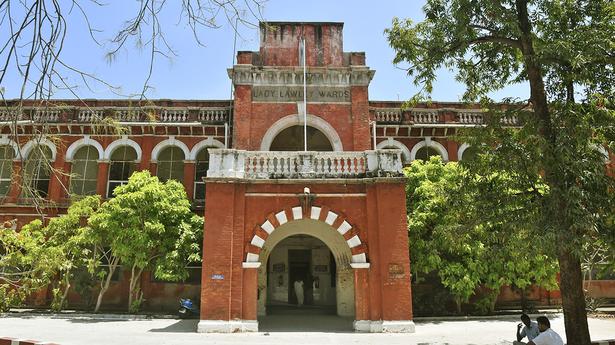
Two centuries of ophthalmic care
The Hindu
The prevalence of eye diseases among soldiers led to the establishment of ‘Madras Eye Infirmary’ in July 1819 at Royapettah
Red-brick buildings are more than just brick and mortar. They are like a storehouse of stories.
On a partially busy Rukmani Lakshmipathy Salai in Egmore, Chennai, stands one such institution where the past and present co-exist: the 203-year-old Regional Institute of Ophthalmology and Government Government Ophthalmic Hospital (RIO-GOH), which is oldest ophthalmic institute in Southeast Asia. The institute was the second oldest eye hospital in the world, after Moorfields Eye Hospital in London, which was established in 1809.
The prevalence of eye diseases among soldiers led to the establishment of ‘Madras Eye Infirmary’ in July 1819 at Royapettah. The hospital moved to the present location in 1884, and was re-named the Government Ophthalmic Hospital in 1888.
While the old block is located on the eastern side, a new building of ‘Shawfield’ came up on the western side later. Initially, the hospital comprised three main isolated blocks, an outpatient dispensary, European and Indian kitchen and a residence inaugurated on March 31, 1887. All these blocks were connected by six corridors a year later, according to records in the hospital.
In fact, the Lady Lawley Block, built and occupied in 1911, is still in use for in-patients and houses an operation theatre.
“The hospital has seen the evolution of ophthalmology from ancient methods to the most modern techniques of treatment. It has trained thousands of ophthalmologists over the years. Scores of ophthalmic chiefs across the country have had their grooming here,” pointed out M.V. S. Prakash, Director, RIO-GOH.
Today, 600-800 patients walk in for outpatient services at RIO-GOH every day. The hospital has a bed strength of 478. It offers services in six sub-specialities of ophthalmology — cornea, orbit and oculoplasty, squint (paediatric ophthalmology and neuro ophthalmology), retina, glaucoma and uvea.











